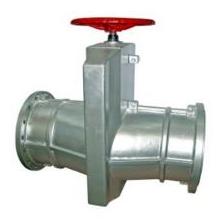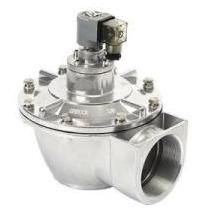Manual Pinch Valve vs Pulse Solenoid Valve
The pinch valve can squeeze the sleeve by pneumatic, electric, manual or hydraulic driving methods to achieve the function of switching/ regulating. Pulse valve refers to a diaphragm valve controlled by a pilot valve such as solenoid or pneumatic, which can instantly open and close a high-pressure air source to generate pulses. The pulse valve is the main component of the bag dust collector and can be sprayed more than 1 million times. Pulse valve is a type of valve that relies on the delay effect of air flow through air resistance and air volume to turn the input long signal into a pulse signal. ATO Automation will introduce the different working principle and precautions of manual pinch valve and pulse solenoid valve.
Manual pinch valve
The manual pinch valve consists of left and right valve bodies, rubber sleeves, large and small valve stems, upper and lower gates, pull rods, brackets, handwheels and other parts. It is wear-resistant, corrosion-resistant, frost-resistant, and has good sealing performance. It only needs to replace the rubber sleeve to be as good as new. The valve body can be used permanently, and its service life is 4-6 times that of ordinary valves. Manual pinch valves are generally used in industrial applications that do not require precise flow control and the fluids handled are abrasive or corrosive. They can be used in chemical processing to control the flow of chemicals through pipelines and tanks, and in mining and mineral processing to control the flow of mud, tailings and other abrasive fluids.

The working principle of the manual pinch valve
When the handwheel is turned clockwise, the large and small valve stems drive the upper and lower pressure plates at the same time, the compression pipe sleeve is closed, and the vise is opened. In this way, the plunger between the guide columns fluctuates to open and close after the valve is completed. Because the rubber hose set or other bearings are small, when the manual pinch valve is opened and closed, the operator only needs to feel the appropriate amount to rotate the handwheel to achieve the opening and closing cycle. Don't try too many accessibility tools, turn on and close to disabling other tools.
Precautions for manual pinch valves
- Due to the small bearing capacity of the rubber pipe sleeve, when opening and closing, as long as the operator feels a moderate amount of resistance when rotating the handwheel of the manual pinch valve, the opening and closing limit has been reached. Do not use your own strength or use multiple people to assist. Do not use other tools to open or close the valve.
- The manual pinch valve can be installed arbitrarily on the pipeline. There is no restriction on the flow direction of the medium. It can be used for a long time. If there is wear or leakage, just remove the valve body and replace it with a new pipe sleeve.
- If the manual pinch valve is used for a long time, if there is wear or leakage, just open the left and right valve bodies and replace the pipe sleeves.
- Applicable temperature: -30-85°C, higher temperature special instructions, additional customization.
- Applicable media: pulp, alkali solution, grinding aid, dry and wet filler.
Pulse solenoid valve
Pulse solenoid valve is the compressed air "switch" of the pulse bag dust collector's dust cleaning and blowing system. It is controlled by the output signal of the pulse blowing controller to blow and clean the filter bags row by row (chamber) to keep the dust collector's resistance within the set range to ensure the dust collector's processing capacity and dust collection efficiency.

The working principle of pulse solenoid valve
Through the wire, the coil in the pulse solenoid valve body is input into the forward pulse signal, and the working magnetic flux generated by the coil makes the moving core attract and open the valve. When the forward pulse signal input is stopped, the moving core is released, and the moving core returns to the initial state under the action of spring force, and the closing valve has a self-holding type, which can be maintained after stopping the input of the positive pulse or power-off, and the negative pulse signal needs to be input to reset. The working principle of the pulse solenoid valve is to use the pulse of the electrical appliance to convert the pulsation of the machine, so that the powerful energy of the pulsating gas becomes momentum, and the huge impulse is released in a short time.
Precautions for pulse solenoid valves
- According to the type of power supply, AC and DC solenoid valves are selected respectively. Generally speaking, AC power is easy to use.
- When used in corrosive or explosive environments, priority should be given to selecting corrosion-resistant pulse solenoid valves based on safety requirements.
- If the environmental space is limited, please select a multi-functional pulse solenoid valve.
- The power supply voltage fluctuation is usually +%10%-15% for AC, and ±%10 for DC. If it exceeds the tolerance, voltage stabilization measures must be taken or special ordering requirements must be made.
- The highest and lowest temperatures of the environment should be within the allowable range.
- In situations where there are frequent vibrations, bumps and impacts in the environment, a special type of pulse solenoid valve should be selected.
- AC220V and DC24V should be preferred for voltage specifications.
- When the relative humidity in the environment is high and there are water droplets and rain, waterproof pulse valves should be selected.
- The rated current and power consumption should be selected according to the power supply capacity. It should be noted that the VA value is higher during AC starting. When the capacity is insufficient, indirect pilot solenoid valves should be selected first.

